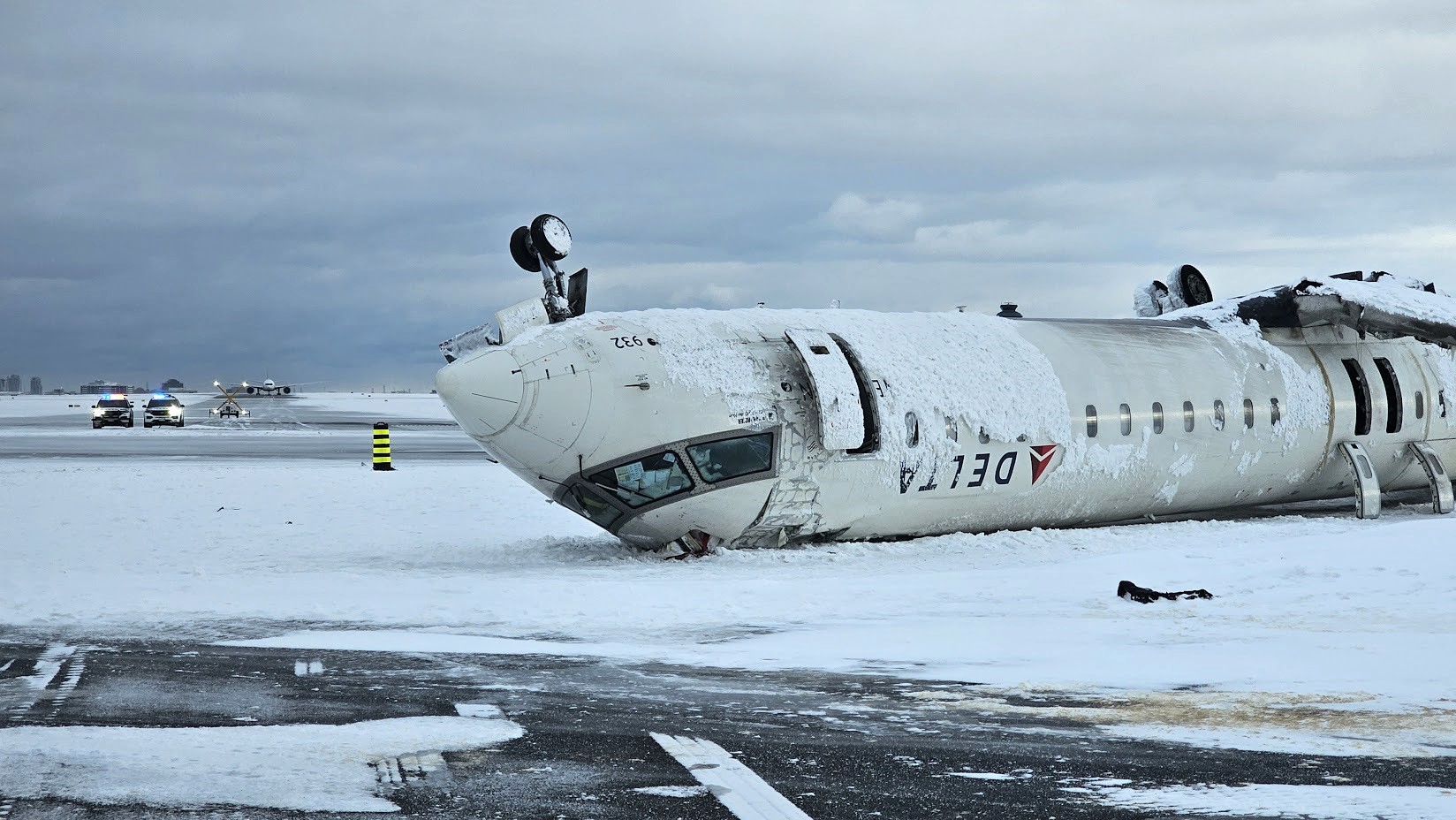A Bombardier CRJ900, operated by Endeavor Air, a wholly-owned subsidiary of Delta Air Lines, landing on Runway 23 at Toronto flipped over and caught fire after touchdown on Monday. Footage of the crash reveals minimal flare, possible ground contact with the right wing on impact, and a potential collapse of the right main landing gear.
While You’re On Guard! will refrain from sharing rumors that are spreading across the Internet regarding the accident, there are a few details that we feel are worth sharing.
First, Toronto was reporting VFR weather at the time of the accident, but it was certainly a windy day. (The METAR below shows an RVR report for Runway 24L. The aircraft landed on Runway 23, and visibility was good as seen in the video above.)
CYYZ 171932Z 27020G32KT 6SM R24L/2600VP6000FT/D BLSN BKN030 M08/M13 A2994 RMK CU5 ACCIDENT REPORT SLP151A slow-moving low pressure system passed through the region eighteen hours prior to the crash, and a high pressure system carrying very cold air was well off to the west over Alberta and Saskatchewan. This created a steep pressure gradient between the two systems which produced strong winds that were felt as far south as New York on Monday.

Second, neither pilot failed any of their training events at Endeavor Air or at Delta mainline. Delta confirmed this in an internal memo to its employees on its “DeltaNet” Intranet. Below is a copy of what was shared in that memo:
- Captain: Mesaba Airlines, a progenitor company of Endeavor Air, hired the captain in October 2007. He has served both as an active duty Captain and in pilot training and flight safety capacities. Assertions that he failed training events are false. Assertions that he failed to flow into a pilot position at Delta Air Lines due to training failures are also false.
- First Officer: Hired in January 2024 by Endeavor Air and completed training in April. She has been flying for Endeavor since that time. As with any airline pilot, her flight experience exceeded the mandated minimum requirements set by U.S. Federal regulations. Assertions that she failed training events are false.
Third, by all accounts, the aircraft flew what appears to be a stable approach. The airplane was on glideslope and on speed the entire way down to the runway. Without sending the world into a tizzy and playing the role of Monday Night Quarterback, it’s difficult to imagine how a third set of eyes on that flight deck would have been uncomfortable with that approach until two seconds before touchdown. There were simply no indications this flight would experience anything other than a routine landing based on what we know right now.
Last year, we started off with a door plug blowing off a brand new Boeing 737 MAX 9 operated by Alaska in January. This was quickly followed by an accident at Houston-IAH in March when a United Boeing 737 MAX 8 overran Runway 27, prompting an FAA safety audit.
This year, we have undoubtedly started off on a worse note. Between the disaster over the Potomac last month, and now this accident in Toronto, it is paramount that we take the time to understand these events, dissect why they happened, and learn what we can do to prevent them in the future. The saying, “it can happen to anyone,” is truly a valid, stark reminder that these accidents absolutely could have taken place with any other qualified crew on the line.
As we continue to put safety first and place it at the front of our minds, there is one thing that You’re On Guard! would like to leave everyone with: unlike the pilots involved in the PSA5324 and PAT25 collision, the pilots involved in this accident in Toronto will live to talk about it. They will also live to hear about it.
Rumors, accusations, sexist remarks, and assumptions do no favors in this industry. We are at our best when we support each other, almost always regardless of circumstance. The number one thing we can all do right now is exactly that.
Fly safe,
C.L.

Leave a Reply